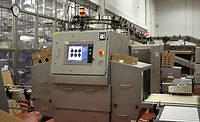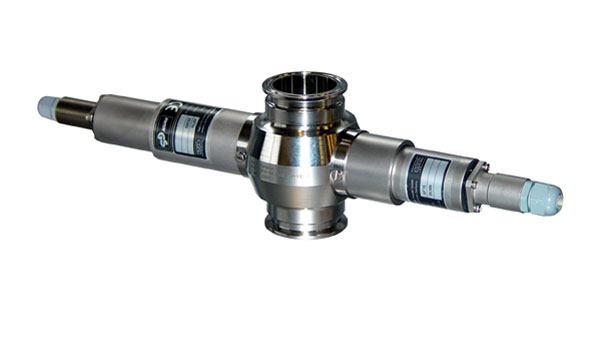Food Safety
Inline monitoring aids in food safety and quality
What you don’t measure could kill your brand.

NIR spectroscopy and an imaging sensor make it possible for powdered milk process parameters—such as moisture, protein, fat and lactose—to be determined quickly and simultaneously using just one system, the Sartorius PMD500 NIR process analyzer. Source: Sartorius.

Schneider Weisse, a Bavarian brewery, replaced the aging sensors in its CIP process with Rosemount Analytical 410VP inline, four-electrode conductivity sensors, allowing optimization of the CIP process. The new sensors have reduced caustic detergent, water and energy use, and shortened cleaning cycles. Source: Emerson Process Management.

Designed for the food and beverage industry, the optek Instruments Model AF-16 high-precision turbidity sensor uses light from 730mm to 970mm (NIR) to measure solids concentration independent of color or color changes. Depending on the optical path length, measuring ranges from high percentage to 0-100 ppm. Source: optek-Danulat.

A Coriolis flow meter installed in a bypass line measures the viscosity of batter as it’s mixed. Source: Endress+Hauser.




Roles for inline sensors
- Density, Brix (beverages, HFCS, etc.), Plato (wort quality in breweries), Baumé, salinity (brine concentration for cheese, meat curing, flotation sorting baths) and rate of fermentation
- Percent concentration (solids, alcohol, etc.)
- Non-glass pH sensors for monitoring ascorbic acid addition to acidified foods
- Dissolved oxygen sensors for fermentation and final check prior to packaging of oxygen-sensitive products (beer, wine, other beverages)
- Chlorine sensors for water treatment applications and vegetable and egg processing cleaning installations
- Turbidity sensors for juice and beverages and phase separation
- Color sensors to monitor juice, beer and soft drinks for color consistency and to ensure the correct product is packaged.
Benefits of inline monitoring
Paths to food quality
It’s all intelligence
Take action, use the tools
Inline instrumentation key to lawsuit
Recently Anheuser-Busch InBev (A-B) was accused in class-action suits (recorded in Pennsylvania, California and New Jersey) that it wasn’t delivering the alcoholic content it promised on its labels. While there is no Federal rule stipulating that alcohol content be placed on the label, and state laws vary, inline instrumentation can prove what’s in the beer is what’s on the label. According to the Pennsylvania lawsuit, “Sometime prior to 2008, A-B began using inline alcohol measuring instrumentation, known as Anton Paar meters—technology which allows A-B to measure the alcohol content of malt beverages to within hundredths of one percent (i.e., +/-0.01%).”
The lawsuit goes on to suggest A-B doesn’t use inline instrumentation during the final stage where the higher percentage (high-gravity) brew is mixed with water and CO2 to arrive at a “total alcohol content to well below the percentage stated on its labels.” Mixing high-gravity (e.g., 7.5 percent alcohol content), freshly brewed product with water to achieve an endpoint alcohol content is a common practice among breweries and not unique to A-B. In most cases, beer is monitored inline at this final stage to assure the final amount meets the label requirements. Then offline samples are checked again after being bottled.
Offline tests conducted by an independent lab (White Labs in San Diego, CA) and sponsored by National Public Radio found A-B beers to be consistent with labeling and the Anton Paar instrumentation specifications of +/-0.01 percent. Tests showed that for one of the many samples tested, the alcohol content in this particular sample measured 4.99 percent by volume, within the specifications of the test equipment. Based on the independent testing, the report suggests the suit is unfounded.
According to Josh Boxer, an associate attorney with the Mills Law Firm in San Rafael, CA, the lead law firm in the class action suit, the plaintiffs did not independently test the alcohol content in the beer to confirm whether it was indeed watered down.
|
Looking for a reprint of this article?
From high-res PDFs to custom plaques, order your copy today!










